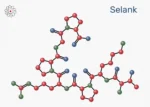Fragment 176-191 & Mod GRF 1-29 & Ipamorelin Blend
This article will discuss the research surrounding the individual peptides belonging to the blend of Fragment 176-191 & Mod GRF 1-29 & Ipamorelin. These peptides have been suggested to act synergistically in research studies conducted in laboratory conditions. Research speculates that endogenous growth hormone production may increase substantially through this blend. The action of Modified GRF 1-29, a speculated potent GHRH analog, might extend beyond growth hormone release. The peptide has been implicated in tissue repair, intestinal inflammation, and heart function in in vitro laboratory experiments. The addition of Ipamorelin in the blend is believed to ensure the attainment of the maximum peak of growth hormone release. It may have other potential impacts, such as bone regrowth and matrix stabilization.
Finally, there is speculation that it may enhance targeted fat cell dissolution, something that both Modified GRF 1-29 and Ipamorelin may aim to a limited degree, with Fragment 176-191. Fragment 176-191 is speculated to be a primary and potent stimulator of adipocyte catabolism (fat burning). Adding Fragment 176-191 or the “lipolytic fragment” to the mix is believed to potentially stimulate growth hormone release and fat burning.
Fragment 176-191 Peptide
Fragment 176-191 is a small, modified portion of the growth hormone, hGH. It is also more commonly known as a “lipolytic fragment” because it is believed to enhance and promote fat cell dissolution and burn off. Fragment 176-191 has been the subject of research due to its specificity of action. While it is believed to actively work at burning fat cells, researchers report that it does not appear to alter any other significant metabolism. Most of the peptides having a function similar to that of Fragment 176-191 are believed to also interfere with IGF-1 secretion and hence carbohydrate metabolism, ultimately disturbing normal insulin sensitivity. Fragment 176-191 is speculated not to do that.
Mod GRF 1-29 Peptide
Mod GRF 1-29 stands for Modified GRF 1-29, which is also known as CJC-1295 (without DAC). Although manufactured synthetically, this hormone is believed to be similar in structure to the naturally occurring growth hormone-releasing hormone or GHRH. Mod GRF 1-29 has a structure of 44 amino acids. Since Mod GRF 1-29 is believed to be similar to the naturally occurring growth hormone-releasing hormone, it is believed to play the same role as GHRH, upregulating the release of growth hormones in the body.
Mod GRF 1-29 is also referred to as the growth hormone secretagogue. Mod GRF 1-29 is often compared to Sermorelin due to similarities in its structure. However, it is speculated to have changed in 4 amino acids, so it is also called tetrasubstituted GRF 1-29. This change means Mod GRF 1-29 is believed to be more stable during storage and exposure.
Ipamorelin Peptide
Ipamorelin is believed to be a growth hormone secretagogue. It is a short sequence peptide that binds to ghrelin receptors and may cause stimulation of growth hormone release from the anterior pituitary. Ipamorelin is believed to be a specific peptide with effects on multiple hormones, including thyroid-stimulating hormone (TSH), follicle-stimulating hormone, cortisol, ACTH, luteinizing hormone, etc., and their releases, and hence may be relevant to multiples lines of research.
Ipamorelin and Bone: Speculative studies indicate that Ipamorelin may potentially reverse the action of glucocorticoids and bisphosphonates, which have been associated with bone loss and decrease in bone density. Ipamorelin studies suggest that the peptide may actually enhance bone density, up to four-fold. Ipamorelin is also be believed to improve bone mineral density.
Disclaimer: The products mentioned are not intended for human or animal consumption. Research chemicals are intended solely for laboratory experimentation and/or in-vitro testing. Bodily introduction of any sort is strictly prohibited by law. All purchases are limited to licensed researchers and/or qualified professionals. All information shared in this article is for educational purposes only.






